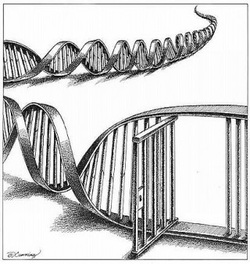I DO NOT ship live birds. All birds are sold for pick up here on the farm in Nanjemoy, MD and babies as straight-run (except for sex-linked breedings). Unless otherwise indicated, these are Large Fowl only. For availability see the current Hatching Log.
I do ship hatching eggs from April through July, I send fertilized eggs via USPS priority mail that are no more than 4 days old and carefully packed for shipping. Shipping info is below.
.
I do ship hatching eggs from April through July, I send fertilized eggs via USPS priority mail that are no more than 4 days old and carefully packed for shipping. Shipping info is below.
.
|
To order please use the order form
Contact:email: [email protected] phone: (301) 678-3533 (DKee) @ BYC: Farmrgirl |
.
|
Prices subject to change. Availability subject to Mother Nature.
Pricing for pullets or ducklets 2 - 5 months old increases 35%; hens at the point of lay are $20-$150 ea. based on breed (limited)
Where does your preservation stock originate?
Where does your preservation stock originate?
.
.
|
During the hatching season I'm happy to send "variety packs" if you'd like more than one breed. Egg prices are listed above, shipping and packaging cost for up to 18 eggs is $15 per shipment.
email: [email protected] phone: (301) 678-3533 BYC ID: Farmrgirl . I have a tiny little operation and nature is unpredictable, so availability varies based on hatch rates, timelines, and predation. My hatching season runs from April to July; the Muscovy will lay and self-hatch as the hens see fit until about October each year. Prices listed above are for birds 1 day-old to 2 months-old except where otherwise noted.
. |
.
Our preservation stock

We purchased much of our original stock from pioneers in preservation and poultry diversity. This allows us to improve some of our current breeds and assist other small growers in starting with a just a few genetically healthy birds to grow and/or improve their own flocks, thereby broadening the breeding of rare and threatened fowl.
The two small preservation breeders we use are leaders in the industry with a well established, forward leaning mission:
David Holderread, leading waterfowl expert and owner of Holderread Waterfowl Farm & Preservation Center in Corvallis, Oregon. David and his wife Millie have been raising waterfowl for over 50 years and have established one of the largest genetic stocks of domestic waterfowl in the world. They offer several varieties of geese and ducks.
Glenn Drowns, poultry expert and owner of Sand Hill Preservation Center in Calamus, Iowa. Glenn and his wife Linda have been growing and selling heirloom plants and rare poultry breeds for more than 20 years with the mission to preserve biodiversity through genetic conservation and promotion of endangered plants and animals. They offer several varieties of turkeys, ducks, geese, chickens and heirloom seeds.
.
Why are genetics important?
Plant and animal biodiversity is an essential component of our agricultural past and future; rare breeds are part of our national heritage. Additionally, we need genetic diversity as a toolbox for continued breeding. This is especially true in a situation where future breeding goals are different from those of today.
When genetic blueprints vary, our crops and livestock will thrive with resilience and vigor. This genetic diversity within breeds strengthens its population and makes it less susceptible to inherited disorders and disease. Without it, genetic weaknesses can quickly multiply in offspring and, over time, the lineage is weakened significantly.
Plant and animal biodiversity is an essential component of our agricultural past and future; rare breeds are part of our national heritage. Additionally, we need genetic diversity as a toolbox for continued breeding. This is especially true in a situation where future breeding goals are different from those of today.
When genetic blueprints vary, our crops and livestock will thrive with resilience and vigor. This genetic diversity within breeds strengthens its population and makes it less susceptible to inherited disorders and disease. Without it, genetic weaknesses can quickly multiply in offspring and, over time, the lineage is weakened significantly.
|
For instance, global production of chickens has experienced massive change and growth over the past 50 years and a recent study says that focus has created a chicken population that lacks genetic diversity, leaving the birds more vulnerable to diseases. The study found that industrial chickens have lost about half of the genetic variations once found in the wild chicken populations, and some have lost 90 percent of those genes. The American Livestock Breeds Conservancy lists nineteen chicken breeds, |
six duck breeds, six goose breeds, and five turkey breeds as critically endangered - meaning that fewer than five hundred breeding birds are managed in the United States.
We may soon lose our genetic agricultural resources if plant and animal breeders don’t focus on preserving them once again.
..
We may soon lose our genetic agricultural resources if plant and animal breeders don’t focus on preserving them once again.
..









